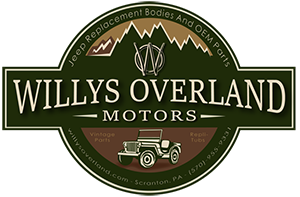Jeep History: From Trials to Triumphs
The Incredible Journey of Willys-Overland
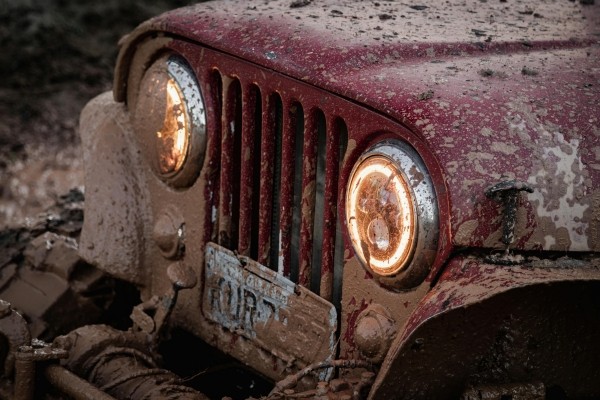
If you're a Jeep enthusiast or an off-road fan, you've likely heard tales of adventure and rugged exploration. But did you know the iconic Jeep's history started more than a century ago? Let's explore the fascinating timeline of Willys-Overland Jeep history and key moments that shaped the brand into what it is today. From its early beginnings to its evolution into a symbol of freedom and adventure, Willys-Overland's story is one worth telling and knowing.
1908 - John North Willys Buys Overland Automotive Division
It all began in 1908 when John North Willys acquired the Overland Automotive Division of Standard Wheel Company. This acquisition set the stage for what would become one of the most iconic automotive brands. At this time, Overland was struggling, but Willys saw potential and turned it around, laying the groundwork for future success. This move marked the beginning of a legacy that would revolutionize off-road vehicles.
1912 - Renaming to Willys-Overland Motor Company
In 1912, John North Willys renamed the division to Willys-Overland Motor Company. This rebranding was more than just a name change; it signified the company's new direction and ambition. The early 20th century was a period of rapid innovation in the automotive industry, and Willys-Overland was determined to make its mark. The new name carried with it a promise of quality and reliability that would become synonymous with the Jeep brand.
1936 - Emerging from Bankruptcy
The Great Depression took a toll on many businesses, and Willys-Overland was no exception. By 1936, the company emerged from bankruptcy and reorganized as Willys-Overland Motors, Inc. This restructuring was a critical turning point, allowing the company to innovate and explore new opportunities. The resilience demonstrated during this period set the stage for future accomplishments, proving that Willys-Overland could withstand even the toughest economic challenges.
1940 - Contracting to Build Military Jeeps
World War II brought about significant changes in many industries, and Willys-Overland was called upon to support the war effort. In 1940, Willys contracted to build military Jeeps based on a design from Bantam Car Company. By 1945, they had produced about 360,000 vehicles. These Jeeps were known for their durability and versatility, becoming a crucial asset for Allied forces. The success of the military Jeep cemented Willys-Overland's reputation as a manufacturer of robust, reliable vehicles.
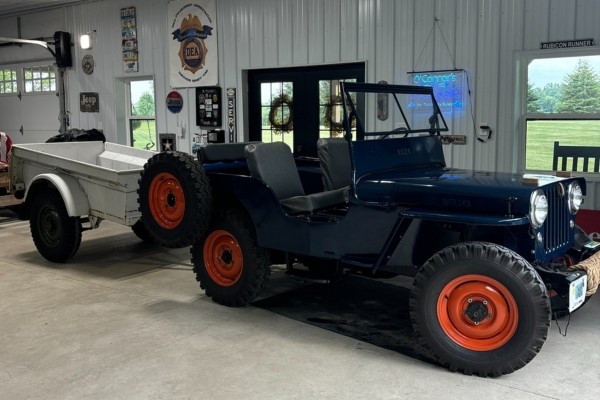
1945 - Launch of the Civilian Jeep (CJ) Line
With the war over, Willys-Overland turned its attention to civilian markets. In 1945, they introduced the CJ2A model, marking the start of the Civilian Jeep (CJ) line. This move aimed to bring the reliability and ruggedness of military Jeeps to everyday consumers. The CJ2A quickly became a favorite among farmers, ranchers, and outdoor enthusiasts, demonstrating that Jeep's utility extended far beyond the battlefield.
1946 - Production of the Willys Jeep Wagon
Innovation continued in 1946 with the production of the Willys Jeep Wagon. Over 300,000 units were manufactured between 1946 and 1965. Initially available only in a burgundy and cream color scheme, these all-steel wagons mimicked the appearance of the "Woodie" wagons popular at the time. This vehicle offered a blend of style and functionality, catering to families and adventurers alike.
1947 - Launch of the Willys Jeep Truck
The following year, Willys-Overland introduced the Willys Jeep Truck. From 1947 to 1965, more than 200,000 units were manufactured. This truck was designed to tackle rugged terrains and heavy loads, making it popular among commercial users and off-road enthusiasts. Its robust build and versatile performance reinforced Jeep's reputation for creating vehicles that could handle any challenge.
1948 - Introduction of the Willys Jeepster
In 1948, Willys-Overland ventured into new territory with the Willys Jeepster. Although only 19,000 units were produced from 1948 to 1950, the Jeepster combined the ruggedness of a Jeep with the comfort of a passenger car. This unique blend made it a standout in the automotive market, appealing to those who wanted a vehicle that could transition seamlessly from city streets to country roads.
1949 - Debut of the CJ3A and the First "Sport Utility Vehicle"
1949 was a landmark year for Willys-Overland. The CJ3A was introduced, and more than 132,000 units were produced by the end of its run in 1953. Additionally, this year marked the debut of the Willys Wagon with a 72-horsepower six-cylinder motor and four-wheel drive, creating what many consider the first "sport utility vehicle." This innovation paved the way for future SUVs, blending off-road capability with on-road comfort.
1952 - Launch of the Willys CJ3B
The Willys CJ3B was launched in 1952. It featured a raised hood to accommodate a taller "F" head engine with 25% more horsepower. By 1968, over 155,000 units were sold. The CJ3B's enhanced power and performance made it a favorite among those who needed a reliable workhorse for tough terrain. This model further solidified Jeep's reputation for producing vehicles that could conquer any environment.
1953 - Kaiser Buys Willys-Overland
In 1953, Kaiser acquired Willys-Overland and rebranded it as Willys Motor Company. This acquisition brought new resources and expertise to the brand, enabling further innovation and expansion. Under Kaiser's ownership, Jeep continued to evolve, introducing new models and features that catered to a growing and diverse customer base.
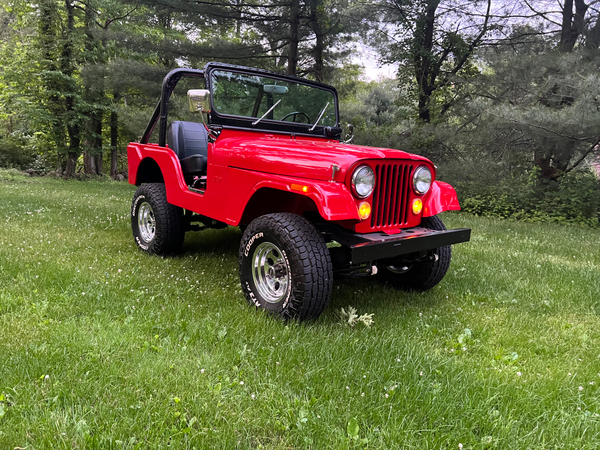
1954 - Introduction of the CJ5 and Enhanced Vehicles
1954 saw the debut of the CJ5, which would enjoy a three-decade production run. This year, four-wheel-drive versions of the Willys Wagons and Trucks were also introduced, now available with the "Super Hurricane" 115 HP 6-cylinder motor. These enhancements provided more power and versatility, making Jeep vehicles even more capable of tackling challenging terrains and tasks.
1956 - Launch of the FC-150 and CJ6
Kaiser-Jeep made headlines in 1956 with the announcement of the FC-150, a "cab-forward" style pickup truck based on the CJ5 chassis. This innovative design maximized cargo space and offered superior maneuverability. The same year, Kaiser-Jeep introduced the CJ6, featuring a 20-inch longer wheelbase. This model provided additional passenger and cargo room, appealing to those who needed a larger, more versatile vehicle.
1957 - Debut of the FC-170
Building on the success of the FC-150, Kaiser-Jeep introduced the FC-170 in 1957. This model featured a 103.5-inch wheelbase and an L-head 6-cylinder engine. The FC-170 offered increased capacity and power, making it an ideal choice for commercial users and off-road enthusiasts who required a robust and capable vehicle.
1963 - Renaming to Kaiser-Jeep Corporation
In 1963, the company rebranded again, this time as Kaiser-Jeep Corporation. This change reflected the brand's growing reputation and market presence. Under this new name, Jeep continued to innovate and expand its product lineup, solidifying its position as a leader in the automotive industry.
1965 - Discontinuation of Willys Wagons and Trucks
By 1965, Kaiser-Jeep discontinued the Willys Wagons and Trucks production, retiring the Willys name with the line. This decision marked the end of an era but signaled a new chapter for the brand. Jeep's focus shifted towards developing new models and features that would continue to meet the evolving needs of its customers.
1970 - Acquisition by American Motors Corporation
A significant milestone occurred in 1970 when American Motors Corporation (AMC) took over Kaiser-Jeep. This acquisition brought new resources and expertise to the brand, enabling further innovation and expansion. Under AMC's ownership, Jeep continued to evolve, introducing new models and features that catered to a growing and diverse customer base.
1972 - Lengthening of the CJ5 Wheelbase
In 1972, the CJ5 wheelbase was lengthened to accommodate the AMC straight-six engine. This modification provided more stability and improved performance, making the CJ5 an even more capable off-road vehicle. The updated CJ5 continued to be a popular choice among Jeep enthusiasts and adventurers.
1975 - Resurrection of Willys-Overland as a Parts Business
Willys-Overland was resurrected in 1975 as a wholesale/retail parts business. This new venture aimed to provide high-quality replacement parts for Jeep vehicles, ensuring owners could keep their beloved vehicles running smoothly. The resurrection of the Willys-Overland name paid homage to the brand's rich history and enduring legacy.
1983 - End of the CJ5 Production Run
By the time the last CJ5 rolled off the line in 1983, more than 610,000 vehicles had hit highways worldwide. The CJ5's popularity and longevity were testaments to its exceptional design and performance. Even as new models emerged, the CJ5 remained a beloved icon among Jeep enthusiasts.
1987 - Acquisition by Chrysler Corporation
In 1987, American Motors was purchased by the Chrysler Corporation. This acquisition brought new resources and expertise to the Jeep brand, enabling further innovation and expansion. Under Chrysler's ownership, Jeep continued to evolve, introducing new models and features that catered to a growing and diverse customer base.
1998 - Merger with Daimler-Benz
A significant milestone occurred in 1998 when Daimler-Benz merged with Chrysler Corporation to form DaimlerChrysler, the fifth-largest automaker in the world. This merger brought new resources and expertise to the Jeep brand, enabling further innovation and expansion. Under DaimlerChrysler's ownership, Jeep continued to evolve, introducing new models and features that catered to a growing and diverse customer base.
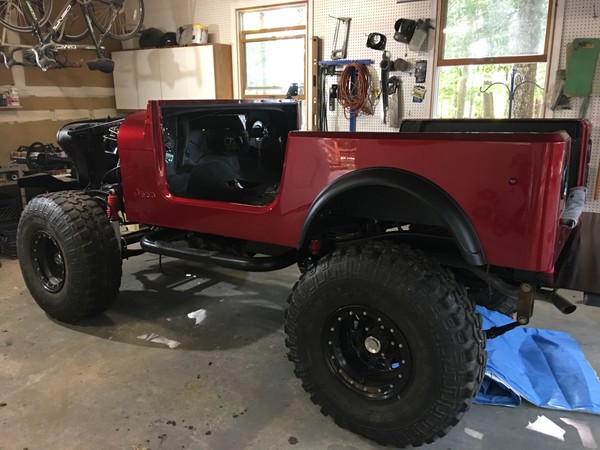
1998 - Introduction of the "Repli-Tub" Replacement Body
In 1998, Willys-Overland Motors started marketing its "Repli-Tub" replacement body, a genuine bolt-on replacement for military and civilian Jeeps built from 1941-1986. This innovative product allowed Jeep owners to restore their vehicles to their original condition, preserving the brand's rich history and enduring legacy.
2001 - New Assembly Facility in Toledo
After more than 60 years of building Jeeps in the same plant, DaimlerChrysler built a new assembly facility two miles north on I-75 in Toledo, Ohio, in 2001. This new facility allowed for increased production capacity and improved efficiency, ensuring that Jeep could continue to meet the growing demand for its vehicles.
2001 - End of the Cherokee Production
The last Cherokee rolled off the assembly line in 2001, marking the end of an era. The Cherokee had become a favorite among Jeep enthusiasts for its rugged performance and versatility. Although production ended, the Cherokee's legacy lived on in newer models that continued to embody the spirit of adventure.
2002 - Introduction of the Liberty (KJ)
In 2002, the Jeep Liberty (KJ) was introduced as the supposed replacement for the Cherokee. The Liberty offered a more modern design and improved features, catering to a new generation of Jeep enthusiasts. Despite its differences, the Liberty retained the rugged performance and versatility that had made the Cherokee so popular.
2006 - Introduction of the Jeep Commander (XK)
The Jeep Commander (XK) was introduced in 2006, offering a larger and more spacious option for Jeep enthusiasts. Designed for families and adventurers alike, the Commander provided ample room for passengers and cargo while maintaining the brand's signature off-road capabilities. Despite its initial success, news of its possible discontinuation emerged in 2007.
2007 - A Year of New Models and Changes
2007 was a busy year for Jeep, with several new models debuting. The wholly redesigned Wrangler (JK) was introduced in two-door and, for the first time, four-door versions. The Jeep Patriot and Jeep Compass (both MK) also made their first appearance, offering more options for Jeep enthusiasts. Additionally, DaimlerChrysler sold an 80% stake in the Chrysler division to Cerberus Capital for a mere $7.4 billion, creating Chrysler LLC.
2025- A New Era for Willys-Overland
At the very end of 2024, Willys-Overland Motors started to undergo a transition to new ownership. Having a lifelong devotion to Jeeps, Jared Cohen was looking to share his passion with other enthusiasts. He has begun the process of taking over the business and breathing some new life into it while staying true to our roots. A move to Scranton, PA, an expanding parts line, and an offering of an improved undercoating system are some of the changes being made. What won't change? The customer service, attention to detail, and offering the most high-quality and user-friendly reproduction vintage Jeep body tubs on the market will always be the backbone of Willys-Overland Motors.
A New Era of Jeep Excellence
As Jeep continues to innovate and expand its range, preserving the legacy and functionality of older models remains crucial. Whether you're looking to restore a vintage Jeep to its former glory or upgrade its performance, Willys-Overland has the expertise and high-quality Repli-Tub replacement bodies you need. Don't let your beloved Jeep sit idle—reach out to Willys-Overland today for top-notch restoration support and guidance. Let us help you keep the spirit of adventure alive!
